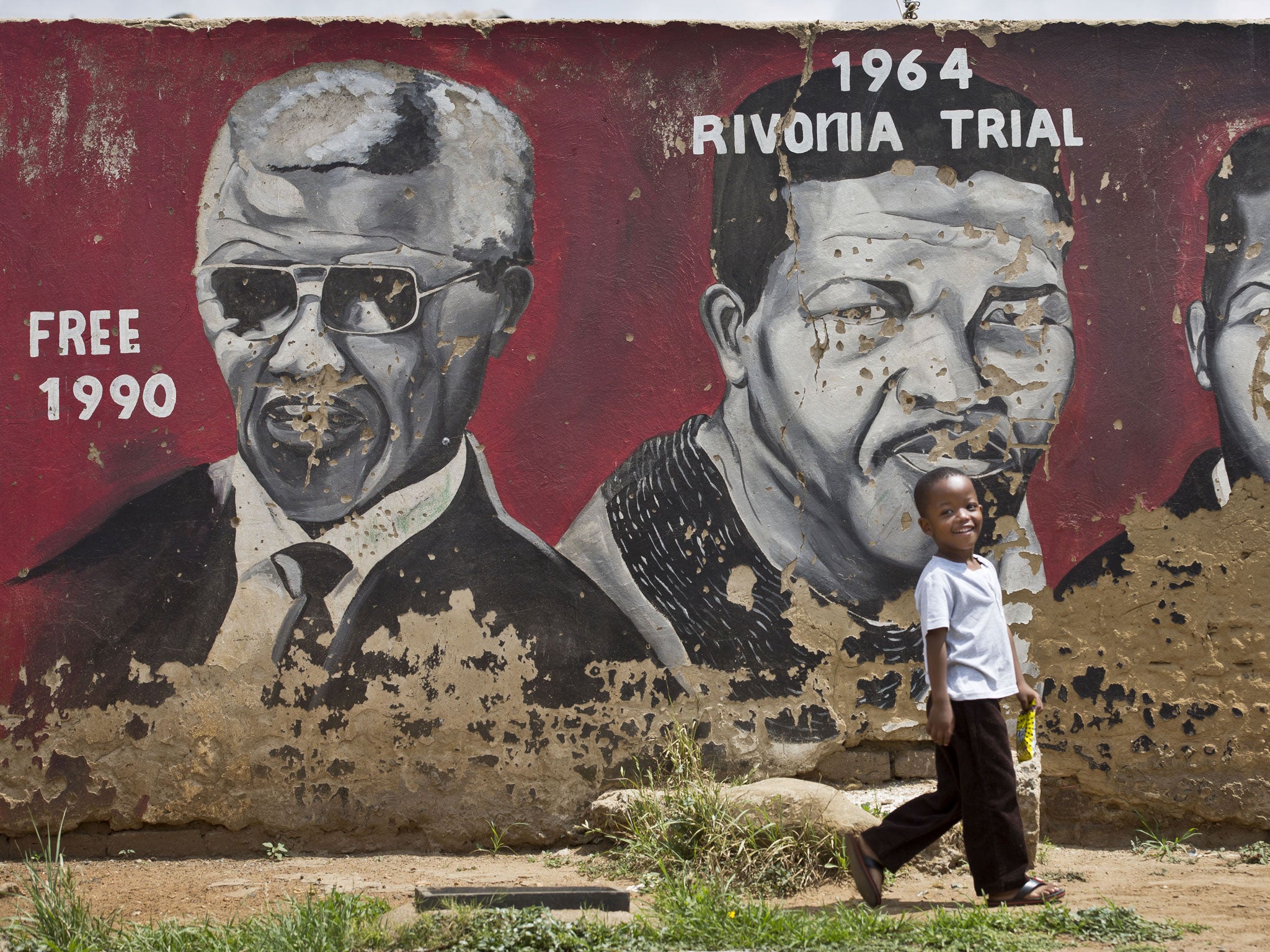The death of Nelson Mandela: ‘The politicians live in their palaces; the rest of us do not see any of this wealth’
In Johannesburg’s townships, citizens lament the betrayal of their former leader’s legacy

“They have turned Soweto into a Disneyland for Mandela. They have tried to make Madiba like Elvis Presley; it has become a tourist site. Now with the death so many foreigners will be going there, then they will say they have seen the real South Africa,” Andile Bongani waved his hands in derision outside his home in another, lesser known South African township.
Like the overwhelming majority of his fellow citizens he was devoted to the man who delivered them from the poisonous bonds of apartheid and kept a fragile state united under difficult circumstances. But, also like many, Mr Bongani felt the memory of their saviour was being used by current political leaders to hide their betrayal of his legacy.
The 62-year-old carpenter, who had not had regular employment for seven years, was standing in front of his home, in an area known as ‘Winnie Mandela’s Shacks’ in Tembisa, a place very far from the sumptuous grandeur in which the funeral of Mr Mandela will take place in front of the world’s leaders.
The land in which this desperately poor community scratch out a living was unused and was taken over with the encouragement of the Mr Mandela’s still powerful former wife who had projected herself as the champion of the dispossessed. Her people subsequently declared that development would come and living standards would be greatly improved. That did not take place and neither did promises from Winnie.
Read more:
Soweto, on the other hand, does show signs of improvement. It has undoubtedly benefited from the association with Mr Mandela, who lived there before his long years of imprisonment in Robben Island. Among other projects illustrating the link, there is the Mandela Museum managed by the Soweto Heritage Trust. The township’s international profile was also raise as the violent battleground between the white racist state and those protesting against it, giving it a high status in the struggle against apartheid.
Places like Tembisa, which is Zulu for ‘there is hope,’ have not benefited the same munificence. There is a busy shopping centre, but also densely packed poverty. “The situation in other townships is far worse, there is nothing like this place in Soweto. We wish the people of Soweto well, but a lot of people here also suffered then [under the apartheid regime]. The important people from abroad who are coming should visit us as well,” said Mr Bongani as he showed the home he and his wife share with their three youngest children – a room of peeling plaster with a floor of beaten earth separated by tattered curtains into a beds, dining area, kitchen and toilet with intermittent water and electricity supply.
Mr Bongani’s younger brother Jonah has found clerical work in Johannesburg, but complained of low wages and apprehension he may be made redundant: “The politicians keep saying how our economy is one of the strongest in Africa. They and the big businessmen live in palaces, the rest of us don’t see all this wealth, we have to keep fighting to eat. I am sure Madiba wouldn’t have wanted this to continue .”
Just a short drive from Mr Mandela’s Johannesburg home in the highly affluent suburb of Houghton are roads strewn with rubbish and people sleeping in the open. Groups of young men hang around, and there are warnings from other residents about the prevalence of crime in these districts. In Newtown, on a stretch of pavement between a mosque and an evangelical church, a group of prostitutes sat on chairs on the pavement, listlessly seeking business. Across the road were posters urging ‘Be wise-Choose life’, part of the government’s campaign to control the rising tide of Aids.
There were beggars, including a white man. He was, he said, a refugee from Mozambique. But most who arrive there from Zimbabwe, Somalia and Nigeria are black. Many say they are the targets of xenophobia.
There have been ferocious outbreaks of violence against the outsiders in the past, with 60 killed and thousands driven off in 2008. Around 140 foreigners were killed last year, according to the Africa Centre for Migrants and Society.
In lethal assaults this year, two Somali brothers were murdered with axes in Limpopo province, and in Port Elizabeth a Somali shopkeeper was filmed as he was stabbed to death. The Sowetan newspaper warned that South Africans were becoming “increasingly desensitised” to attacks on migrants.
Two Zimbabwean brothers came up to say that they were set upon by local youths last week with sticks in central Johannesburg. Holding up his bruised right arm, 23 year old Patrick Nandoro, asked: “What reason did they have to beat us up apart from the fact that we have come from another country? Why can’t they treat us like brothers, we are all Africans? ”
The migrants, too, mourn the death of Nelson Mandela, he stressed: “He was hero to all of Africa and the rest of the world. His stand against apartheid moved people in Africa to get independence from our own white masters. I don’t think Mandela knew about the full extent of the bad treatment we are getting here. He would have been sad if he had known, I am sure.”
Subscribe to Independent Premium to bookmark this article
Want to bookmark your favourite articles and stories to read or reference later? Start your Independent Premium subscription today.

Join our commenting forum
Join thought-provoking conversations, follow other Independent readers and see their replies